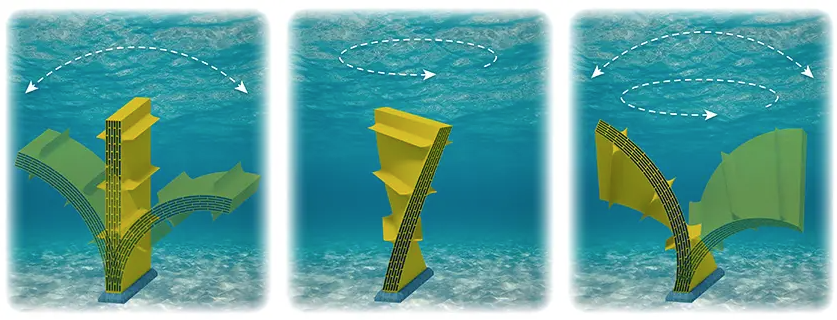Many small and flexible converters are put together to produce from ocean energy
(sustainabilityenvironment.com) – They stretch, deform, flex and then return to their original form. But in the process they generate clean electricity. They are the new DEEC-Tec patented by the National Renewable Energy Laboratory, in the United States, devices capable of producing ocean energy. And, why not, in the not-too-distant future capture the kinetic energy of people and built environments.
But how do these DEEC-Tec work in practice? “Imagine a sea snake,” explains the NREL. “The animal can swim thanks to an intricate collaboration between its numerous flexible muscle cells”. In the technology created by the US lab, almost the same thing happens: “individual energy converters work together, like muscle cells, to create a larger structure. Just like the sea snake”.
Energy from waves and dielectric elastomers
Unlike “more traditional” ocean power plants, NREL technology combines several small and flexible flexWEC converters into one structure. These devices are simple transducers and can undergo a series of structural deformations compared to external movements that allow them to extract energy from the stimulus itself. All without using joints or mechanical hinge systems. “Dielectric elastomer generators are one such example”.
Combined, this tiny flexWECs can form the basis of fabrics, bulkheads, support structures and more. For example, they can show marine energy production systems structured as balloons that contract and expand on the surface, or as elastic walls installed on the seabed. Or more, like floating serpents deformed by the waves.
Since this approach does not focus wave energy on a single converter or power transmission system, it avoids accumulating forces potentially harmful to the machine. Not only that: FlexWEC can also be built with more sustainable and economical materials, also facilitating installation and control once in the water. But the road is still long. The patent – which currently only covers applications at sea – is recent and scientists are currently evaluating exactly how this technology can help power production from the oceans.

